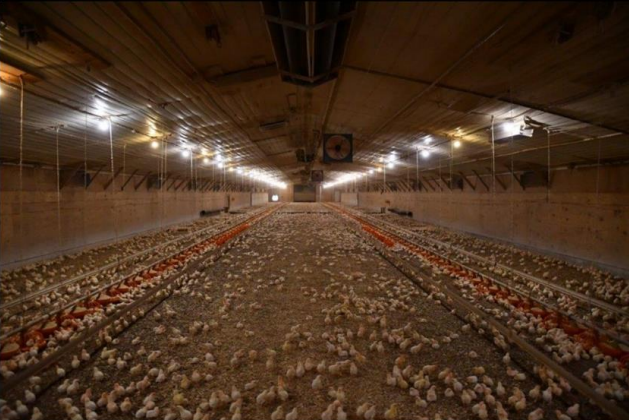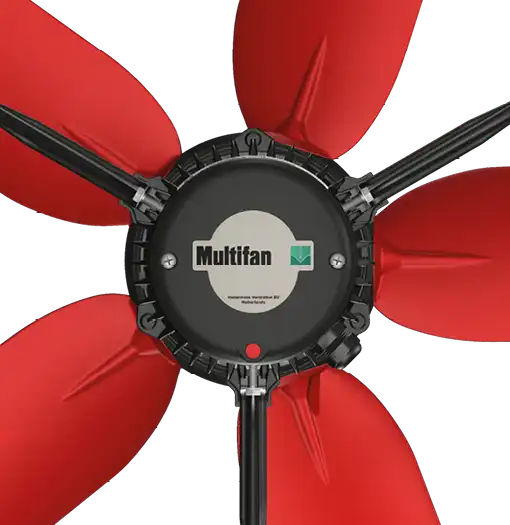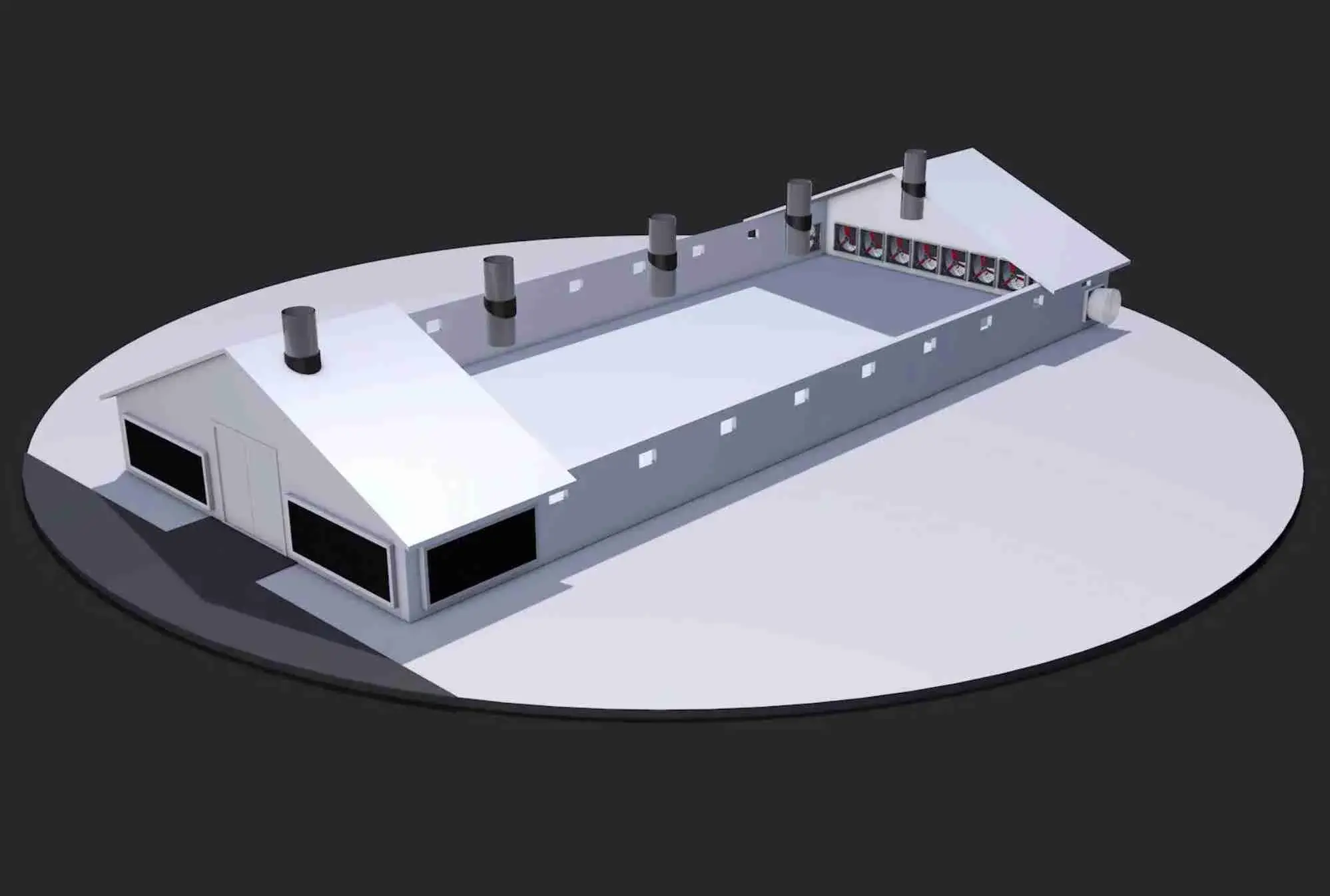Vostermans Ventilation collaborated with the Department of Poultry Science at the University of Georgia to study the effects of high-speed air circulation in broiler houses on litter quality, footpad health, and oocyst sporulation. Eight Multifan 24” 1/3HP fans (6,000 CFM each) were installed in a 40’ x 500’ (approximately 12 x 150 m) test barn, adjacent to an identical control barn without circulation fans.
Destratification and Reduced Heating Runtime
Both barns were equipped with 14 temperature sensors to measure floor and ceiling temperatures. During winter (November to January), temperature variations in the control barn exceeded 2.7°C more than 50% of the time. In contrast, the test barn with Multifan circulation fans maintained temperature variations under 2.7°C for 99% of the time. The fans created a homogeneous temperature throughout the barn, preventing hotspots under brooders, which reduced heating runtime and system response time.
Chicken Behavior
In the control barn during winter, 80% of chickens crowded near sidewalls, avoiding the heaters at the barn's center. However, in the test barn, chickens were evenly distributed across the entire barn, including the center, sidewalls, and near drinkers. Traditional airflow at floor level is limited to 50 ft/min (approximately 15 m/min). With Multifan circulation fans, the floor-level airflow increased to 150 ft/min (approximately 45 m/min), with no adverse effects on day-old chicks when the air temperature was appropriate.
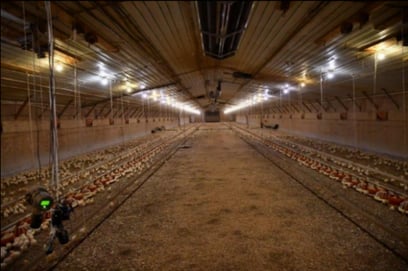
Control Barn
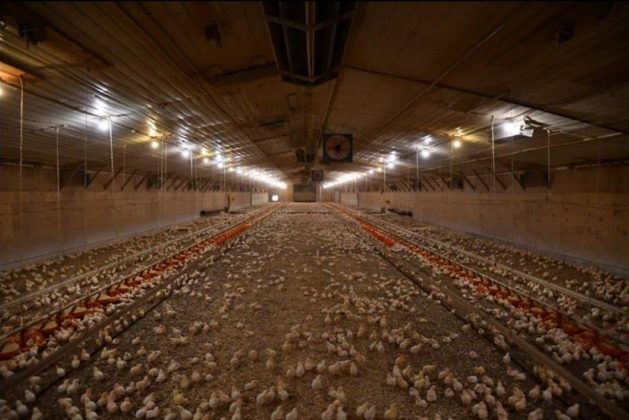
Test Barn with Multifan Circulation Fans
Litter Moisture Reduction
The higher airspeed significantly reduced litter moisture during the first 21 days of each flock, with a decrease of about 10% (based on homogenized 200 g samples). Across five flocks, the average reduction in moisture content was approximately 6%. Although this reduction seems small, it improved chicken health by reducing caked litter and footpad lesions. Additionally, higher airspeed decreased moisture level disparities between the barn's center and sidewalls.
Reduced Ammonia Levels
In addition to improvements in temperature, behavior, and litter quality, ammonia levels were significantly lower in the test barn. Ammonia concentrations averaged below 15 ppm in the test barn, compared to 20-30 ppm in the control barn. Lower litter moisture levels contributed to reduced ammonia, benefiting chicken health.
Improved Chicken Health and Welfare
The reduced litter moisture in the test barn did not negatively impact oocyst sporulation. Additionally, better litter conditions improved footpad quality, with a 20% reduction in footpad lesions in the test barn compared to the control barn.
Study Conclusion
The study, conducted by the Department of Poultry Science at the University of Georgia, demonstrated the significant benefits of higher airspeeds achieved with Multifan circulation fans. The improved barn conditions can provide economic advantages for poultry farmers, including reduced heating costs and healthier chickens.
Read the project summary and the full report on USPOULTRY.org via these links:
